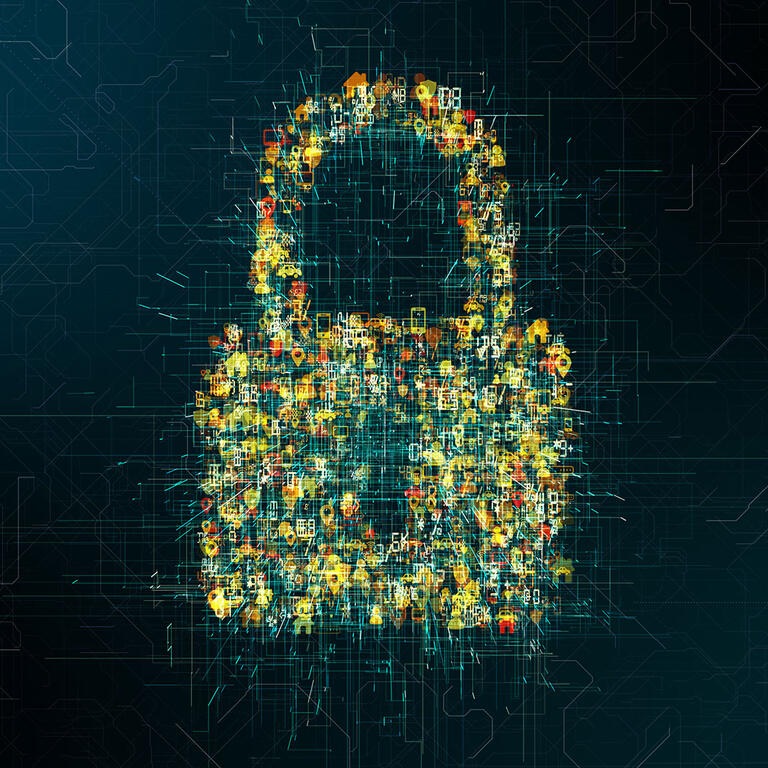
Anyone can fall victim to a cyberattack; news outlets have been reminding us of this fact regularly since 2019. Châteauguay, Longueuil, Marieville, Montmagny, Otterburn Park, and Westmount are just some of the cities to have faced the wrath of cybercriminals.
The Canadian Centre for Cyber Security has noted an increase in threats against municipal and provincial governments. “[We have been made] aware of over 100 cases of cyberthreat activity targeting Canadian municipalities since the beginning of 2020. Most cases involved social engineering, unauthorized network access, or the deployment of malicious code, such as ransomware. Compromises against any level of government can implicate residents’ personal information, service continuity, and trust in the compromised institutions,” says the organization in its document entitled National Cyber Threats Assessment 2023-2024.
Municipalities must therefore stay on guard: Cyberthreats represent a growing risk for the proper functioning of their essential infrastructures. The same report reveals that the oil and gas industry (41.8%), hospitals and health establishments (36.7%), electric power producers (32.4%), the finance and insurance industry (28.2%), and the mining sector (27.2%) were especially affected by computer hackers in 2019. The main perpetrator? Ransomware, the most disruptive cyberthreat face by municipalities.
Ransomware: the blackmail tool par excellence
Ransomware is made up of two words: ransom (never a good sign), and “ware,” for software (malicious, obviously). This pesky tool skillfully orchestrates a virtual hostage situation for your business. It encrypts the data on exposed servers, paralyzing the computer and telephone systems, making it impossible to consult employee records and to use email accounts, among other things. Citizens are also affected, losing access to the online portal for requesting a permit or reserving a library book, for example. Given its significant impact on a business’s capacity to operate normally, ransomware is the cybercrime scourge of the hour.
The wrongdoers behind this tool are therefore affecting the victimized organization’s operations. They also sometimes threaten to share the information they have collected. We therefore have a double-extorsion: they demand a significant sum of money not to share the personal information and restore the stolen data.
Once the ransom has been paid—in bitcoin, obviously—the fraudsters may or may not send a key releasing the computers from the malicious code.

The art of phishing
A hook: that’s the image that the dangers of this cyberthreat should evoke. In this case, the hackers are going fishing. They cast the line and wait for victims to take the bait. Phishing consists of sending fraudulent communications to masses of people: in the case of a municipality, a group of employees could be targeted. These messages, sent by email or SMS, for instance, seem to come from a reliable source. Hence the name “brand spoofing.”
The goal of the wrongdoers is to steal data, credit card information, or log-in information. To do so, the hackers are seeking to install spyware on the victims’ computer. The victim unknowingly clicks on a contaminated link or harmful attachment. Malicious software is thus installed, such as a keylogger. As time goes on, sensitive information starts to slip, eventually landing in the wrongdoers’ hands…
Several other carefully crafted threats exist to allow hackers to achieve their goals: password cracking, denial of service attack, man-in-the-middle attacks, code injections, zero-day, etc. That’s why it’s important to be able to count on a trusted partner to deploy smart security solutions tailor-made for Canadian cities.
A favourable context for cybercriminals
What factors contribute to the proliferation of these dangers for Québec and Canadian municipalities? Here are a few.
The technological development of cities
It’s a fact: the smart city concept is getting more and more attention. Its benefits—optimized resources, improved quality of life for citizens, and adaptations to climate change, for instance—are enticing to municipalities, which are considering embarking on this promising revolution. However, the deployment of Internet of Things (IoT) devices is a must when transitioning to a smart city. And the higher the number of such connected sensors, the greater the potential exposure to cyberthreats.
These smart systems produce large amounts of data that may be of interest to ill-intentioned organizations. The close ties municipalities forge with their citizens can also whet their appetite: the exchange of personal information or the deployment of a virtual one-stop shop, for example, are entryways for cybercriminals. One thing is certain, the multiplication of online services increases the risks of cyberattacks.
The popularity of hybrid work
The COVID-19 pandemic turned the whole working world upside-down. Organizations were left with no other choice but to transition into a modern working environment. Overnight, employees were faced with the requirement of working from home. The popularity of the hybrid work method has not waned since…
Given the requirements of working remotely, certain information security facets have become indispensable: the management of identities, the management of devices, productivity, collaboration, and protection of information. Delaying adjusting to the new work context leaves the door open to hackers to deploy their harmful tactics. Municipalities sometimes want to outsource these tasks. But beware: not all managed service providers have the expertise required to oversee information technology (IT) and security.
The high turnover
It’s the very essence of ransomware or phishing: an employee unwittingly opens an infected link or file … and a bunch of problems ensue! It is therefore crucial for municipalities to pay particular attention to the protection of their network, as well as to cybersecurity awareness and training.
In fact, the most common form of phishing these days concerns fictitious job offers. This tactic is gaining popularity in the current context: the lack of workforce combined with enticing salaries is one of the factors facilitating hackers’ handiwork. The victim, thinking they are applying to another municipality—it does happen!—is compromising their own personal information, and the integrity of their current employer’s network.
And while the labour shortage is affecting several areas of activity, certain organizations are finding it difficult to recruit and retain qualified employees. There is a high turnover rate as a result. Recurring information sessions could be the solution to countering targeted attacks by hackers.
Cyberthreats: impacts on municipalities
An organization that falls victim to a cyberattack needs to take major steps to recover. The potential costs associated with ransomware are multiple, starting with, of course, the ransom itself. Given the extensiveness of their operations, municipalities that fall victim to a cyberattack could end up spending a considerable amount of time repairing the damage.
“Cyber security reporting indicates that ransom payments have increased since 2020, likely driven in part by increasingly significant demands against large enterprises,” reveals the Canadian Centre for Cyber Security. According to Coveware, the data aggregator on cyberattacks, the average payment associated with ransomware, in Canadian dollars, for the second quarter of 2022, was $298,755. One year later, the average ransom stood at $780,144. There’s reason to question the longevity of certain SMEs and to push cities to assess their ability to respond to such an attack now.
The value of the ransom to be paid represents just a portion of the total cost for a target organization. Disbursements are also to be expected for the loss in your work teams’ productivity, for repairing and updating the compromised systems, and for rebuilding your undoubtedly tarnished reputation. Oftentimes, a public relations and investigation firm is involved in the crisis management process.
And that’s in addition to the cost related to incomplete data: a study on ransomware conducted by TELUS with 450 Canadian businesses revealed that just 42% of businesses that pay the ransom succeed in recovering all the data that was taken hostage. It just goes to show that it’s better to be safe than sorry.
Cybersecurity: choosing a trustworthy partner
A cyberthreat remains a risk not only to the critical infrastructure of municipalities, but also for the safety and wellbeing of your citizens. Take action before one of your computers surprises you with a ransom demand.
First solution: Consider consolidating the business relation with the telecommunications service provider you already know and trust. There are several benefits to grouping all your services under the same roof. Contact us today to stop dishonesty in its tracks and stay many steps ahead of computer hackers.
23 november 2023, By Videotron Business






